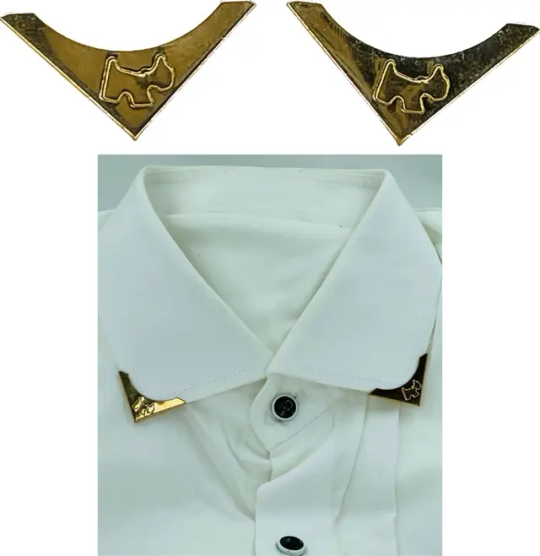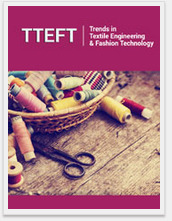#garment database provider
Explore tagged Tumblr posts
Text
Why Is Market Research Important for Your Garment Business?

Marketing research is important in a garment business because it helps you understand what customers like, what trends are currently going on in the market, and who your target audience is. If you design or stock products without research, it is possible that they may not match the preferences of the customers and the sales will be affected.
Marketing research also reveals the prices at which customers prefer to buy and what type of fabric (such as cotton, linen, silk) is in high demand. Based on this, you can improve your collection and pricing.
Apart from this, marketing research helps you understand the way your competitors work – such as what they are selling, what are their prices, and what kind of promotions they are using. This helps you present your brand in a different and better way.
By doing research, you can identify areas where there is demand but supply is low, so that you can launch your products at the right place and at the right time. Overall, marketing research protects you from pitfalls and helps you move your business forward in an informed manner.
77Data: Best Garment Database Provider in India
77Data is one of the best database provider company in India. The database is related to all type of garment and product such as hosiery machinery & spares, fashion accessories, readymade, apparels, textile, garments and many more.
Download the 78,500 Retailers & Traders - Textile, Garments, Readymade, Apparels, Fabric Etc.
DOWNLOAD THE DATABASE RELATED TO ALL TYPES OF INDUSTRIES AND BUSINESSES THAT ARE GIVEN BELOW CITY- AND STATE-WISE
Hosur manufacturing company list | Industries in Bangalore | Industries in Faridabad | Coimbatore industries list | Nagpur manufacturing company list
The database contains mobile numbers, email addresses, company names, websites, PIN codes, landline numbers, cities/states, services, and product details.
For more information, visit our website or contact us at +91-8882956467
#garment database provider#garment business#garment data#important of marketing in business#garment industry
0 notes
Text
Literally so many super practical accessories were replaced with elastane, and I mean so so many, but also different clothing design elements that are not only gorgeous, but super practical and also comfortable, were replaced by elastane, and now if you see those elements in clothes it's "aesthetic" and no one realizes the function these elements had.
Corsets and stays were the precursor to bras because they support breasts, but they had a different and arguably more important function: keeping up all those layers of skirts and petticoats. The whole corsets cause injury and deformity thing is a total myth by the way, I mean modern mass produced corsets probably cause injuries because they're ill-fitted but back in the day they were fitted to your body, not sewn off of pattern blocks. They were pretty damn comfortable, if you wanted to tight lace it was about as uncomfortable and harmful as really tight shape wear or pants, and any injury caused was similar to wearing a chest binder for too long.
Mostly what corsets did was distribute the weight of your skirts and petticoats from your waist across your pelvis, which if you've gone hiking before you'd know that backpacks have a strap across the hips for the same reason, which is that redistributing weight like that takes it off your core and onto your legs which are typically much stronger. But you don't want your skirts to start on your hips because they'll ride down all the time.
Smocking is another thing, when I discovered it (I was browsing through a huge open source database of traditional skills and trades with antique training materials that I've since lost) that I went HOLY SHIT! because not only can it he incredibly incredibly gorgeous and intricate, seriously go look at smocking patterns on pinterest you'll go insane, they were the elastic trims of clothes before elastane. When I'm rich with a lot of free time one day and get to make all my clothes it'll all be smocked, not shirred, because fuck elastane and also it's so much prettier.
Pleats? Yeah functional. In several different ways too! Pleats serve as a way to shape garments, to give them volume and help them lay in a way that's elegant and comfortable, but they're also sometimes there to make clothes adjustable. You ever see those vintage shirts that have vertical pleats all along the front panels? Yeah those were there so a single item of clothing could be taken in or let out easier as humans naturally fluctuate in size. Was it their main function? Idk probably but it was a function and an incredibly useful one!
Lacing has been making a comeback in fashion these last few years and I think y'all can guess the purpose of it easily enough, it's pretty obvious, making sure your clothes are snug as a bug without having to take it in or let it out every time you lose or gain weight or get bloated or take a huge dump. You also typically don't have to tailor clothes if it has lacing panels, because those are responsible for the fitted look, and if the creases under the laces bother you, you can get or make a little panel that goes between the laces and the fabric. I forget what it's called, but it was used with stays iirc to both provide extra support to the front and make everything seem neater, though it's entirely likely I'm remembering this tidbit wrong so if you have the correct information you're welcome to correct me.
Gloves used to be such a societal norm that there were codes for which types to wear in which settings, what fabric signified the class you were in, and wealthy people used to literally just toss a pair and buy a new one if they got dirty or damaged apparently. Now we mostly wear them as protection when working manual labor or crafts, or from the elements, or in medical settings.
Gloves have more uses than you'd think though, and I personally would love to see a resurgence of gloves in popular fashion. Gloves protect you from the cold sure, but they also protect you from the sun, from disease, from injury. I have a pair of lacy fingerless gloves just for driving because in the summer months my steering wheel gets so hot I can't touch it with my bare hands, and the backs of my hands almost always get sun while driving, so I figured why not get a little protection from both and look elegant as fuck while doing it? It worked! And I look elegant as fuck doing it.
Head scarves are a bit of a doozy, much like masks, because of the cultural associations with both. Masks obviously due to the pushback in the last few years due to enforced covid measures, but head scarves due to racism. Y'all remember those vintage pinups with women wearing head scarves and victory rolls (I think that's what it's called)? Yeah they wore them because they had to take over manual labor during the war and their hair kept getting in the way. Later we developed better headbands and pins and they became more in fashion, and then women were all forced to be housewives where stronger hold and protection wasn't necessary, and then when we entered the workforce again we had gel and mousse and hairspray and elastic hair ties.
Head scarves not only keep your hair out of your face, they also protect intricate styles (whether longer term protective styles or shorter term styles for specific events). Ask any black person why they wear a bonnet (in good faith) and you'll get a delightfully detailed explanation, which includes but isn't limited to the fact that it protects their braids, locks and hair in general. That's because it reduces friction on the scalp and hairstrands which often leads to scalp irritation, breakage and hair loss.
You wanna know how head scarves help on finer, straighter hair textures? When the wind threatens to destroy your million pin and half a can of hairspray updo, you tie your scarf up over it loosely, and boom your updo is safe. I've used it a couple of times before going to fancy events, and gotten a lot of looks because they're all conservative white Christians (I grew up around them didn't have a choice) and they were uncomfortable with it looking a little (but not really at all) like a hijab.
There is so much gorgeous, intricate and beautifully useful history to fashion, and people seem to really take it for granted due to fast fashion and consumerism and planned obsolescence. There's so so much you can do to make your clothes fit better, look better, be more comfortable, have more function, and I truly wish everyone had the opportunity and resources to learn about these things.
You know what, since I'm thinking about it anyways, let's talk formalwear accessories. Most of these are traditionally menswear but a bit of gender fuckery is good for the soul, and frankly most of these are about making your mass-produced clothing fit and lay properly without having to go to the tailor.
Shirt stays: these go around your thighs to hold your shirt down, so that it stays smooth and tucked in. They're usually elastic, with 1-3 clips, and if you wear skirts frequently this is a GREAT way to make sure your top doesn't ride up. The clips will be visible if you're wearing something tight, so loose pants or skirts are where these do best. There's also an insane version that clips to your socks, but that is for lunatics. If you wanted, you could also use one of these clips to hold up thigh-highs.
These do a great job of smoothing and narrowing the waist area by keeping your shirt from bunching there.


Sleeve garters: usually metal, leather, elastic, or silk. These are usually worn with button-down shirts to adjust where your cuff falls on the wrist or hand. They're properly worn on the upper arm, and you pull the fabric of the sleeve above the garter until you cuff is where you want it. Because this creates a puff of sleeve at the bicep, it also broadens the appearance of the shoulders. It's great if you're working with your hands or if your sleeves are often too long for your preference.


Waistband clip or belt adjustment clip/buttons
Three different ways of tightening the waistband of a pair of pants or a skirt. You're not going to get more than an inch or so tighter without weird bunching, and for most of these you'd want them to be hidden under a shirt or jacket, but they do the job if that's something you're having issues with.



Collar pins: There are so many fun ones out there, both with and without chains. They're not terribly practical, though the slight weight may help keep your collar where you want it. Also consider collar tips, which pin (surprise) to the very tips of your collar points.



Sweater clips/guards: meant to hold your sweater or cardigan mostly closed. Great if your cardigan doesn't button, or if you don't like it to be buttoned all the way.


There's tons of other stuff out there like this--etsy is a great place to find this stuff. A lot of these are old solutions to the very modern problem of mass-maufactured clothes not being as one-size-fits-all as advertised, but they're also a fun way to put a bit of personality into businesswear.
43K notes
·
View notes
Text
Analyst Roles in Kolkata's Textile Sector
Renowned for its vibrant cultural legacy and artistic flair, Kolkata has traditionally served as a major center for the textile and garment industry. From handcrafted fabrics to large-scale manufacturing units, the city plays a vital role in India’s textile economy. As the sector increasingly embraces digitization and data-driven decision-making, the demand for data analysts in Kolkata’s textile industry is growing rapidly. Businesses today require actionable insights to optimize production, monitor supply chains, understand consumer trends, and improve profitability. This shift has opened up exciting new career avenues for aspiring analysts in the region.
The Evolving Role of Data Analysts in the Textile Industry
Traditionally, the textile industry relied on manual methods and intuition for decision-making. However, with growing competition, rising raw material costs, and fluctuating consumer demand, companies now recognize the importance of data. Data analysts help bridge this gap by collecting, organizing, and interpreting data to reveal patterns and provide insights that drive smarter strategies.
In the textile sector, data analysts play a wide range of roles including:
Forecasting demand for different product lines and seasonal trends.
Analyzing production efficiency and minimizing material wastage.
Monitoring supply chain logistics and identifying bottlenecks.
Evaluating customer feedback to improve product design and quality.
Assisting management with sales data, pricing decisions, and inventory planning.
With more organizations adopting ERP systems and digital tracking tools, the need for skilled data professionals has never been greater.
The Growing Opportunity in Kolkata
As one of India’s major textile markets, Kolkata is home to numerous manufacturers, exporters, and retailers who are increasingly hiring analysts to modernize their operations. From legacy businesses in Burrabazar to modern textile parks on the city’s outskirts, the need for data insight is universal.
For aspiring professionals, this growth means a steady increase in internship and job opportunities—provided you have the right skillset. Pursuing data analyst training in Kolkata can help bridge the gap between raw talent and employability, especially when it’s tailored to industry-relevant tools and techniques.
Importance of Professional Training
The pathway to becoming a successful analyst begins with structured learning. Whether you come from a commerce, science, or even a design background, enrolling in one of the best data analyst courses can fast-track your journey. These programs typically cover:
Core programming languages like Python or R.
Data manipulation using Excel, SQL, and databases.
Statistical methods and data visualization.
Real-world case studies and capstone projects.
Beyond technical knowledge, a good course also equips learners with problem-solving skills, business acumen, and communication strategies—all of which are essential in a practical work environment.
Why Offline Learning Still Matters
While online learning is popular, many students and working professionals still prefer offline classes for the added structure, peer interaction, and direct mentorship they offer. A well-organized offline program provides the environment for focused study and real-time feedback from instructors. For learners based in West Bengal, finding institutes that offer hands-on, instructor-led data analyst training in Kolkata can be a decisive advantage in gaining both confidence and clarity in core concepts.
Offline learning also fosters stronger networking, group discussions, and collaborative projects—skills that are incredibly valuable in real-world analyst roles.
DataMites Institute – A Trusted Partner in Your Data Journey
When it comes to launching a successful career in analytics, choosing the right training provider is crucial. DataMites has earned a reputation for delivering industry-aligned courses that prepare learners for real-world challenges. Whether you’re a beginner or someone seeking a career transition, DataMites Institute offers a well-rounded curriculum designed to build technical skills, domain knowledge, and practical experience.
Endorsed by IABAC and NASSCOM FutureSkills, DataMites Institute offers courses that adhere to international industry standards. Learners benefit from expert guidance, practical project experience, internship programs, and extensive placement support.
DataMites Institute also provides offline classroom training in major cities like Mumbai, Pune, Hyderabad, Chennai, Delhi, Coimbatore, and Ahmedabad—ensuring accessible and flexible learning opportunities throughout India. For learners in Pune, DataMites Institute offers an excellent platform to master Python and succeed in today’s fast-paced tech landscape.
For students and professionals in Kolkata, DataMites Institute offers a strong foundation in data analytics with a curriculum that includes practical case studies relevant to sectors like textiles, manufacturing, and retail. The institute’s structured training, placement assistance, and internship programs make it one of the most reliable options for those looking to build a future in analytics.
Kolkata’s textile industry is at a crossroads—blending heritage with modern technology. As data continues to shape the way decisions are made, the need for skilled analysts will only grow. By investing in the best data analyst courses and choosing the right learning path, you can position yourself at the forefront of this transformation.
Whether your goal is to join a heritage textile firm or a fast-paced export house, building your data skills through quality education—such as what DataMites provides—can set you on the path to a meaningful and future-ready career.
0 notes
Text
How Blockchain is Revolutionizing Supply Chain Management

In an increasingly interconnected world, Supply Chain Management (SCM) has evolved into a complex ecosystem involving numerous stakeholders, ranging from manufacturers and suppliers to logistics providers and retailers. Amid the growing demand for transparency, efficiency, and traceability, blockchain technology has emerged as a game-changer. By offering a decentralized and tamper-proof ledger system, blockchain is poised to revolutionize the way supply chains operate globally.
What is Blockchain?
At its core, blockchain is a distributed ledger technology that records transactions across multiple computers. Unlike traditional databases, blockchain ensures that once data is recorded, it cannot be altered retroactively without the consensus of all participants. This immutability, coupled with real-time updates and visibility, makes blockchain an ideal solution for improving trust and efficiency in supply chains.
Enhancing Transparency and Traceability
One of the most significant benefits of blockchain in Supply Chain Management is the enhancement of transparency. Each transaction or movement of goods can be recorded in real time and made accessible to all relevant parties. For instance, a consumer buying organic coffee can trace the product’s journey from the farm to the retail shelf, verifying certifications and quality checks along the way.
This level of traceability is crucial in industries like food, pharmaceuticals, and luxury goods, where authenticity and compliance are paramount. Blockchain allows businesses to combat counterfeiting and ensure product integrity.
Improving Efficiency and Reducing Costs
Traditional supply chains often suffer from inefficiencies caused by siloed data, manual documentation, and a lack of coordination among stakeholders. Blockchain eliminates these issues by enabling all parties to access a single, unified version of the truth.
Smart contracts—self-executing contracts coded onto the blockchain—can automate processes like payments, customs clearance, and inventory updates. This not only accelerates operations but also minimizes human error and reduces administrative costs.
For example, a logistics provider can automatically release payment to a shipper once the goods are delivered and confirmed on the blockchain, eliminating the need for intermediaries and lengthy paperwork.
Strengthening Security and Trust
Security is another major advantage of blockchain in Supply Chain Management. Because the data on a blockchain is encrypted and decentralized, it is nearly impossible to tamper with. Each transaction is verified by multiple nodes in the network, ensuring accuracy and trustworthiness.
This is particularly valuable in global supply chains involving multiple jurisdictions and compliance requirements. Companies can confidently share sensitive information, such as certifications, invoices, and contracts, knowing that the data is secure and verifiable.
Enabling Sustainability and Ethical Sourcing
As sustainability becomes a top priority for consumers and businesses alike, blockchain helps in tracking the environmental and ethical impact of products. From verifying that raw materials are ethically sourced to measuring carbon footprints, blockchain provides the tools needed to make supply chains more sustainable.
For instance, fashion brands can use blockchain to prove that their garments are made using fair labor practices, while electronics companies can trace minerals to conflict-free sources.
Real-World Applications
Several industry giants are already leveraging blockchain to transform their supply chains. Walmart, for instance, uses blockchain to track the origin of fresh produce, significantly reducing the time it takes to trace contaminated items during a recall. Similarly, IBM’s Food Trust platform is helping retailers and suppliers improve food safety and reduce waste through blockchain-based transparency.
Blockchain is not just a buzzword—it’s a transformative technology that’s reshaping the future of Supply Chain Management. By offering unprecedented levels of transparency, efficiency, and security, blockchain empowers businesses to build more resilient and trustworthy supply chains. As adoption grows, we can expect blockchain to become an essential component of modern SCM, driving innovation and accountability across industries.
0 notes
Text
Uniform Inventory Management vs. Traditional Stock Handling: A Comparative Analysis
Introduction
In industries where uniforms are a critical part of daily operations—such as healthcare, hospitality, manufacturing, and public safety—effective management of apparel inventory plays a vital role in maintaining operational efficiency and hygiene standards. Traditionally, organizations have relied on manual or semi-digital stock handling systems to track and distribute uniforms. However, as operational demands grow more complex and margins tighten, these conventional approaches increasingly struggle to meet modern requirements. In contrast, uniform inventory management systems offer an automated and data-driven alternative, promising higher accuracy, better traceability, and streamlined workflows.
This article explores the comparative dynamics between uniform inventory management and traditional stock handling methods. It outlines the core functionalities of each, examines their strengths and limitations, and presents use-case examples to illustrate the tangible benefits of modernizing uniform tracking systems. By diving deep into cost efficiency, scalability, real-time tracking, and integration capabilities, we aim to provide a comprehensive guide for decision-makers looking to upgrade their uniform inventory strategy.
Understanding Traditional Stock Handling Methods
What Are Traditional Stock Handling Methods?
Traditional stock handling typically involves manual logging systems, spreadsheets, and paper-based documentation. Uniforms are issued and returned through human-monitored checkpoints, with stock levels maintained through periodic physical counts. Record-keeping is often decentralized, with data stored in physical logs or siloed systems that lack cross-functional visibility. This approach leans heavily on staff vigilance and procedural adherence.
In small organizations or those with low uniform turnover, these methods might suffice. However, scalability and accuracy become significant challenges as the volume of uniforms increases or operational complexity grows. Misplaced uniforms, stock discrepancies, and delays in laundering cycles are common issues that can compromise both efficiency and employee satisfaction.
Key Components and Workflow
A typical traditional system includes a stockroom or uniform distribution area, where garments are stored by type, size, and sometimes by department. Issuance is done by an attendant or supervisor who manually records the uniform issued to each employee. Tracking returns or laundry cycles also involves manual logging, and losses or late returns are often hard to trace. Reporting is typically retrospective, based on periodic reconciliations.
Though these systems may incorporate basic software tools like Excel, they largely lack automation, real-time data access, or integration with other operational systems like payroll or HR.
Modern Uniform Inventory Management Systems
Core Features and Technologies
Modern uniform inventory management systems utilize advanced technologies such as RFID tags, barcode scanning, cloud computing, and IoT devices to automate and monitor uniform distribution. These systems provide a centralized database that tracks the location, status, and lifecycle of each garment in real time. Users interact with the system through mobile apps, kiosks, or web interfaces, reducing the need for manual intervention.
Uniforms are tagged with RFID or barcodes upon acquisition and scanned during issuance, return, and laundering. The system logs every transaction, updates inventory counts automatically, and provides alerts for anomalies like late returns or stock shortages. Real-time dashboards and analytics tools offer visibility into usage patterns, stock levels, and turnover rates, allowing managers to make informed decisions.
Advantages Over Manual Systems
The shift to a digital, automated system brings multiple advantages. Firstly, it reduces the risk of human error in tracking and documentation. Secondly, it enhances accountability by creating an auditable trail for each garment. Thirdly, it improves efficiency by enabling faster distribution and return processes. Furthermore, integration with ERP, HR, and payroll systems facilitates more cohesive operational workflows.
Automation also allows for predictive analytics, helping organizations forecast demand, schedule laundry cycles, and manage procurement more efficiently. The result is a more responsive and cost-effective uniform management process that aligns with broader organizational goals.
Comparative Analysis: Key Differences
Accuracy and Error Management
Manual systems are inherently prone to errors due to human oversight. Incorrect data entry, forgotten log entries, and inconsistent record-keeping can lead to inaccurate inventory counts. These inaccuracies can cause operational delays, overstocking, or understocking, impacting service quality and budget control.
In contrast, modern uniform inventory management systems drastically reduce these risks. Automated scanning ensures every garment movement is recorded accurately. Real-time updates minimize data latency, and audit trails allow for backtracking and correction of discrepancies. This high level of accuracy enhances both inventory control and staff accountability.
Efficiency and Time Management
Traditional systems are time-intensive. Staff must manually check inventory, issue uniforms, and document returns. In large organizations, this process can consume significant man-hours daily. Moreover, reconciling inventory reports or locating missing items often involves time-consuming investigations.
Automated systems streamline these processes. Self-service kiosks allow employees to check out or return uniforms without staff supervision. The system instantly updates inventory and flags any irregularities. Managers can access up-to-date reports at any time, improving responsiveness and reducing administrative workload.
Cost Implications
On the surface, traditional methods may appear more cost-effective due to lower upfront investment. However, hidden costs such as labor, uniform losses, and inefficiencies often outweigh the initial savings. Inconsistent tracking leads to over-purchasing, and missing uniforms increase replacement costs.
Automated systems require capital investment in software, hardware, and training. However, they deliver long-term savings through reduced labor, lower inventory losses, and optimized procurement. The ability to make data-driven decisions further enhances cost control and budgeting accuracy.
Scalability and Flexibility
Manual systems become increasingly untenable as organizations grow. Higher staff numbers, multiple departments, and varied uniform types complicate tracking and reporting. Adding new locations or modifying workflows typically requires manual restructuring.
Digital systems scale effortlessly. New locations can be integrated into the existing platform, and workflows can be customized through configuration rather than structural changes. Cloud-based systems also enable centralized management across multiple sites, enhancing oversight and consistency.
Data and Analytics
Traditional methods offer limited analytical capabilities. Data is often fragmented, retrospective, and manually compiled, making trend analysis difficult. Decision-making is largely reactive rather than proactive.
Modern systems excel in data analytics. Dashboards display real-time KPIs such as usage rates, return compliance, and stock availability. Predictive models can forecast demand based on historical trends, helping managers plan proactively. This analytical power enables continuous improvement in uniform logistics.
Industry Case Studies
Healthcare Sector
In hospitals, staff uniforms must be changed frequently to maintain hygiene. Traditional systems often struggle with the volume and frequency of uniform changes. One major hospital transitioned to an automated system with RFID tracking, resulting in a 40% reduction in uniform losses and a 25% increase in laundry cycle efficiency.
Hospitality Industry
Hotels require clean and well-fitted uniforms for multiple departments. A luxury hotel chain implemented a uniform inventory management platform, reducing distribution time by 60% and improving employee satisfaction scores. The system also flagged underused stock, helping reduce procurement costs by 15% annually.
Manufacturing and Industrial Settings
In manufacturing, uniforms must meet safety standards and be in good condition. A factory with 2,000 employees used to rely on manual stock logs, leading to frequent shortages and compliance issues. Post-implementation of a digital system, compliance improved, and the company saved over $100,000 annually in labor and inventory costs.
Implementation Considerations
Initial Setup and Training
Transitioning to a modern system requires planning. Key steps include selecting a vendor, tagging existing inventory, training staff, and integrating with existing systems. A phased rollout often mitigates disruptions, allowing the organization to adapt gradually.
Training is crucial. Staff must understand how to use the new interfaces, while managers need to interpret analytics and reports. Successful adoption depends on user confidence and system usability.
Integration and Customization
The best systems offer seamless integration with HR, payroll, and ERP platforms. Customization options allow the system to align with organizational processes, such as specific approval hierarchies or department-based access controls.
Ongoing support from the vendor ensures the system evolves with the organization. Regular updates, technical support, and scalability options enhance the system’s long-term viability.
Strategic Benefits of Digital Transformation
Beyond operational efficiency, modern uniform inventory systems contribute to broader strategic goals. Improved data quality supports better governance and compliance. Enhanced visibility into uniform logistics aids in audit readiness. Moreover, employee satisfaction tends to improve when distribution becomes faster and more reliable.
Environmental sustainability is another advantage. By accurately forecasting demand and managing lifecycle data, organizations can reduce overproduction and waste. Some systems even track laundering frequency to minimize water and energy use.
A uniform management system serves as a central node in this transformation, connecting procurement, usage, laundering, and retirement of garments into a cohesive cycle.
Final Thoughts
The contrast between traditional stock handling and automated uniform inventory systems is stark. Manual methods, though simple, falter under pressure from scale, accuracy demands, and compliance needs. Digital systems, while requiring upfront investment, offer unmatched benefits in efficiency, accountability, and adaptability.
Organizations serious about optimizing operations, reducing waste, and enhancing service quality cannot afford to ignore the advantages of modern inventory management. The transition may be complex, but the returns—in both tangible savings and strategic agility—justify the move.
For those ready to modernize, evaluating uniform inventory management platforms is a crucial first step. With the right solution, businesses can turn uniform logistics from a burden into a streamlined asset.
0 notes
Text
National Institute of Fashion Technology
National Institute of Fashion Technology (NIFT): A Comprehensive Overview
Introduction
The National Institute of Fashion Technology (NIFT) is India's premier institution for fashion education, design, technology, and management. Established in 1986 under the Ministry of Textiles, Government of India, NIFT has played a pivotal role in shaping the Indian fashion industry. NIFT received statutory status in 2006, enabling it to confer its own degrees. With 19 campuses across India, NIFT is renowned for providing high-quality education that combines creativity with practical skills and technological knowledge.
Academic Programs
NIFT offers a broad spectrum of undergraduate, postgraduate, and doctoral programs tailored to meet the evolving demands of the global fashion industry. The curriculum is designed to foster innovation, technical excellence, and industry readiness.
Undergraduate Programs
Bachelor of Design (B.Des.): A four-year program with specializations including Fashion Design, Textile Design, Knitwear Design, Accessory Design, Leather Design, and Fashion Communication. It focuses on creative development, concept building, and hands-on practice.
Bachelor of Fashion Technology (B.FTech.): A four-year course in Apparel Production that integrates management, technology, and engineering applied to garment manufacturing.
Postgraduate Programs
Master of Design (M.Des.): A two-year program aimed at enhancing creative and analytical skills while encouraging interdisciplinary research in design.
Master of Fashion Management (MFM): This course focuses on areas such as retail, marketing, international business, and brand management in the fashion industry.
Master of Fashion Technology (M.FTech.): A postgraduate program designed to deepen knowledge in fashion production technology and advanced manufacturing processes.
Doctoral Programs
Ph.D. (Full-time and Part-time): Offered in diverse disciplines related to fashion, design, management, and technology. The program promotes academic research and development within the industry.

Admission Process
Admission to NIFT is highly competitive and conducted through a national-level entrance examination. The selection process typically involves multiple stages: a written test (CAT and GAT), followed by a Situation Test for design programs or a Group Discussion and Personal Interview for postgraduate courses. The examination tests aptitude in creativity, problem-solving, communication, and analytical ability.
Campus Facilities
NIFT campuses across the country are equipped with modern infrastructure to support creative exploration and academic excellence.
Design Studios and Labs: Facilities for pattern making, textile testing, computer-aided design (CAD), garment construction, and more.
Computer Labs: Equipped with industry-relevant software like Adobe Suite, CorelDraw, and 3D design tools.
Resource Centres and Libraries: Extensive print and digital resources, fashion magazines, trend forecasting materials, and market research databases.
Hostels: Comfortable residential facilities with options for both male and female students, depending on the campus.
Cafeterias and Dining Halls: Hygienic and diverse meal options catering to various tastes and preferences.
Sports and Wellness Facilities: Infrastructure for indoor and outdoor games, yoga, gymnasiums, and medical services for health and wellness.
Global Collaborations
NIFT emphasizes global learning and cultural exchange through its collaborations with over 30 international institutions. These partnerships facilitate student and faculty exchanges, joint research projects, and participation in global events, enhancing the global competence of students.
Research and Innovation
Innovation is a core pillar at NIFT. The curriculum incorporates emerging technologies like Artificial Intelligence, Augmented Reality, 3D printing, and wearable technology. Specialized labs and studios allow students to explore areas such as smart textiles, fashion sustainability, and product lifecycle management. Interdisciplinary projects and competitions encourage students to push boundaries and address real-world challenges through design and technology.
Placements and Career Opportunities
NIFT has a centralized placement process and maintains a strong track record of successful placements. Top fashion houses, retail giants, and global brands employ the institute's alumni. Roles offered range from fashion designers and merchandisers to product developers, visual merchandisers, brand strategists, and fashion consultants.
Top recruiters include brands such as H&M, Myntra, Adidas, Arvind, Tommy Hilfiger, Raymond, Tanishq, and more. NIFT alumni have also ventured into entrepreneurship, launching successful fashion labels and startups.
The average placement package ranges from ₹3 to ₹6 lakh per annum, with some high-achieving graduates securing international roles or higher packages depending on specialization and campus.
Alumni Achievements
NIFT boasts a prestigious alumni network that includes some of the most recognized names in Indian fashion and design. Designers like Sabyasachi Mukherjee, Manish Arora, Ritu Beri, and others are among its celebrated alumni. Many NIFT graduates have made significant contributions to not only fashion but also in allied fields such as film, television, retail, and art.
Cultural and Extracurricular Life
NIFT campuses are known for their vibrant cultural life. Annual fests like Spectrum, Converge, and fashion shows allow students to showcase their creativity, build networks, and engage with the industry. Clubs, workshops, seminars, and guest lectures from industry veterans provide further learning beyond the classroom.
Students participate in national and international competitions in design, innovation, and entrepreneurship. The institute also organizes industrial visits, fashion weeks, exhibitions, and live projects, ensuring real-time industry interaction.
Focus on Sustainability and Social Responsibility
NIFT is also deeply committed to sustainability and community engagement. Various programs and student initiatives address social issues, promote ethical design practices, and encourage sustainable fashion. Students are taught to design with environmental consciousness and to consider the social impact of their creations.
Conclusion
The National Institute of Fashion Technology continues to be the most prestigious fashion education institute in India. With a robust academic structure, excellent faculty, world-class facilities, and strong industry linkages, NIFT prepares students to be leaders in the fashion and design industries. The institute not only equips students with technical and creative skills but also nurtures innovation, entrepreneurship, and global awareness. For any aspiring designer, technologist, or fashion manager, NIFT offers the perfect platform to turn passion into profession and creativity into a successful career.
1 note
·
View note
Text
Rajasthan Industries Directory – Connecting You to Rajasthan’s Business Landscape
Your Gateway to Rajasthan's Industrial Growth
Rajasthan, known for its rich heritage and vibrant culture, is also a hub for various thriving industries. From textiles and mining to tourism and handicrafts, the state hosts a diverse industrial ecosystem. As businesses continue to grow and evolve, connecting with the right industrial partners becomes essential.
This is where the Rajasthan Industries Directory by Dialmenow Online Pvt. Ltd. comes into play. Serving as a comprehensive resource, it bridges the gap between manufacturers, suppliers, distributors, and service providers across Rajasthan’s vast industrial landscape. Whether you are an entrepreneur, investor, or supplier, this directory is your ultimate business networking tool.
What is the Rajasthan Industries Directory?
The Rajasthan Industries Directory is an extensive database that provides detailed information on companies operating in various sectors across Rajasthan. From established enterprises to emerging startups, the directory serves as a one-stop solution for accessing key business data.
It includes:
Company Profiles
Contact Details
Product and Service Offerings
Business Categories
Geographical Information
Industry Certifications and Recognitions
This directory simplifies the process of finding reliable business partners and service providers in the region.

Why the Rajasthan Industries Directory is Essential for Businesses
✅ Efficient Business Networking
Building strong business relationships is a fundamental aspect of growth. The Rajasthan Industries Directory makes it easy to connect with manufacturers, suppliers, and service providers across different sectors.
✅ Market Expansion
Whether you're a local business looking to expand or an external investor eyeing Rajasthan’s potential, the directory offers insights into local industries, helping you make informed decisions.
✅ Access to Verified Information
The directory contains only verified information, ensuring that businesses can rely on the data for genuine connections and transactions.
✅ Enhanced Business Visibility
For companies listed in the directory, it acts as a powerful marketing tool. Being a part of the Rajasthan Industries Directory increases online visibility and credibility, attracting potential customers and partners.
Industries Covered in the Rajasthan Industries Directory
The diversity of Rajasthan’s industries is well represented in the directory. Here are some key sectors included:
1. Textiles and Garments
Rajasthan is a leader in textile production, known for its block-printed fabrics, handlooms, and traditional attire. Manufacturers, exporters, and designers are easily accessible through the directory.
2. Mining and Minerals
With its rich mineral resources, Rajasthan’s mining sector is a major contributor to the state’s economy. The directory lists key mining companies, mineral processing units, and equipment suppliers.
3. Tourism and Hospitality
Being a globally renowned tourist destination, Rajasthan has a flourishing hospitality sector. The directory includes hotels, resorts, travel agencies, and service providers.
4. Handicrafts and Artisans
From blue pottery to metalwork, the directory offers access to authentic artisans and handicraft manufacturers, helping businesses promote Rajasthan’s traditional arts.
5. Agriculture and Food Processing
With a strong agricultural base, Rajasthan is a leading producer of grains, pulses, and spices. The directory connects buyers with food processing units and agri-product suppliers.
6. Automobiles and Engineering
The state’s growing industrial zones are home to numerous automobile and engineering companies, many of which are featured in the directory.
How Dialmenow Online Pvt. Ltd. Powers the Rajasthan Industries Directory
Dialmenow Online Pvt. Ltd. has established itself as a reliable platform for business information services. By compiling and managing the Rajasthan Industries Directory, they offer an accurate, regularly updated resource for businesses seeking connections.
Features of the Directory by Dialmenow:
Easy Navigation: Users can search by industry, location, or company name.
Comprehensive Listings: Detailed company profiles with verified data.
Real-Time Updates: Businesses can update their profiles to reflect current information.
Mobile Accessibility: Access the directory on the go using the mobile-friendly platform.

Benefits of Listing in the Rajasthan Industries Directory
If you own a business in Rajasthan, listing in the directory opens doors to numerous opportunities:
Increased Visibility: Get discovered by potential clients and partners.
Lead Generation: Gain access to a targeted audience actively seeking products and services.
SEO Boost: Enhance your online presence through a high-authority platform.
Credibility and Trust: Being part of a verified directory builds trust among customers.
Success Stories: How Businesses Benefited from the Rajasthan Industries Directory
📖 Case Study 1: Textile Exporter’s Growth
A Jaipur-based textile manufacturer expanded its export operations by connecting with international buyers through the directory. Their profile visibility attracted reliable inquiries, leading to long-term contracts.
📖 Case Study 2: Mining Equipment Supplier
A mining equipment supplier in Udaipur witnessed a significant rise in sales by partnering with local mines and processing units found in the directory.
📖 Case Study 3: Hospitality Chain Expansion
A hospitality chain found quality local suppliers for décor and furnishings through the directory, enhancing the authenticity of their luxury hotels.
Conclusion: Your Partner in Business Growth
The Rajasthan Industries Directory is not just a database; it is a strategic business tool that fosters collaboration, opens growth opportunities, and strengthens the industrial network of the state.
Whether you are looking to expand your business presence, find reliable suppliers, or explore new investment opportunities, the directory serves as your reliable companion in navigating Rajasthan’s vast industrial landscape.
0 notes
Text
Top 5 Apparel Manufacturers in India [2025]
According to estimates, around US$108 billion was spent on the textile industry in India last year. It is estimated that the industry will reach US$141 billion by 2021. More than 45 million people are directly employed by corporations, while another 60 million are indirectly employed by companies, making the textile industry the country's second-largest employer after the agriculture industry.
The size of India's textile industry is expected to quadruple to US$500 billion in the next ten years. Domestic sales to the United States are US$315 billion and export sales are US$185 billion. Domestic sales currently stand at around US$68 billion, while exports are valued at around US$40 billion. Here we are telling about top manufacturers in India related to apparel.
Original Source: https://abhishek77data.wixsite.com/77dataprovider/post/top-5-apparel-manufacturers-in-india-2025
The top apparel manufacturers in India that will dominate the country's apparel business in 2025 are as follows:
1. Alok Industries

This vertically integrated textile company provides end-to-end solutions in five major industries: cotton yarn, apparel fabrics, home textiles, apparel and polyester yarn. It is headquartered in New York City. Alok has a large consumer base that includes, among other things, domestic and international shops, apparel exporters in India and leading brands around the world. They also have some of the world's most successful traders and India's most successful textile producers.
2. Arvind Mills
Founded in 1931 by three brothers, Arvind Mills is one of India's leading high-end superfine fabric producers. Arvind Mills is based in New Delhi. For decades, Arvind has been a major player in the industry with brands such as Arrow, Flying Machine and USPA. Arvind has expanded into a wide range of industries including retail, engineering and telecommunications as well as textiles, apparel, complex materials, chemicals and dyes.
As the top manufacturer of fire-retardant fabric in the United States, Arvind also manages 15 apparel brands worldwide, including brands such as Tommy Hilfiger and US Polo.
The company's 42,000 employees represent industries such as ecology and social initiatives, real estate, clothing, and farming. It ranks first among the top ten textile companies in India in terms of revenue. Arvind Limited also owns NNNOW.com.
3. Vardhman Textile
This subsidiary of the Vardhman Group was founded in 1965 and is now India's largest textile company, with annual sales of over US$1 billion. Vardhman is a manufacturer and trader of Indian yarns, greased/processed fabrics, acrylic fibers, and other products.
Since its inception, the Vardhman Group has grown into a global corporate giant with operations in India and 75 other countries. It is involved in the manufacturing of yarns, fabrics and acrylic fibres. As India's second-largest textile company by revenue, Vardhman has a solid business plan and considerable market share.
4. SEL Group
Indian textile firm SEL is one of the largest integrated textile companies in the country and the world. The company's facilities in Punjab, Haryana, Himachal Pradesh and Madhya Pradesh cater to the needs of a wide range of consumers, from spinning and weaving to manufacturing of value-added items such as terry towels and readymade garments. SEL is a leading provider of yarns and threads in the European and US markets.
5. Himatsingka Group
The Group has one of the world's largest capacities to produce upholstered fabric, curtain fabric and bed linen.
Since its inception in 1985, the Himatsingka Group has focused on product development, best manufacturing techniques and effective supply chain efficiencies to provide the best customer service available in the market.
Note: Download top businesses and industries database at best price. Click on the text links given below.
pvt ltd company in mumbai list | hosur company list | list of companies in gurgaon
0 notes
Text
Top Diploma Courses in Polytechnic Colleges for a Bright Future

Polytechnic education has become a preferred choice for students seeking practical knowledge and skill-based careers. With a strong focus on technical expertise, diploma courses offered by reputed institutions provide a gateway to promising career opportunities. Among the leading polytechnic colleges in Haryana , Seth Jai Prakash Polytechnic (SJPP) stands out as a premier institution offering top-notch diploma programs. If you're looking to build a successful future, here are the top diploma courses you can pursue at SJPP:
1. Diploma in Civil Engineering
Civil engineering is a highly sought-after field with opportunities in construction, infrastructure development, and urban planning. SJPP offers a comprehensive program covering structural engineering, surveying, material science, and project management, preparing students for roles in both government and private sectors.
2. Diploma in Mechanical Engineering
Mechanical engineering is the backbone of industrial development. The diploma course at Seth Jai Prakash Polytechnic focuses on manufacturing, thermodynamics, CAD/CAM, and automation. Graduates can find lucrative careers in automotive, aerospace, and manufacturing industries.
3. Diploma in Electrical Engineering
With the rising demand for energy solutions and electrical infrastructure, this diploma course equips students with knowledge in power systems, electrical machines, and circuit analysis. SJPP ensures hands-on training, enabling students to excel in industries such as power generation, electronics, and automation.
4. Diploma in Computer Engineering
In today’s digital era, computer engineering offers vast career opportunities in IT, software development, and cybersecurity. The diploma course at SJPP covers programming languages, networking, database management, and cloud computing, making students industry-ready.
5. Diploma in Electronics & Communication Engineering
This course focuses on embedded systems, digital communication, VLSI design, and robotics. Graduates from Seth Jai Prakash Polytechnic can explore career opportunities in telecom, semiconductor, and IoT industries.
6. Diploma in Automobile Engineering
With rapid advancements in automobile technology, this diploma provides expertise in vehicle design, maintenance, and electric vehicle technology. SJPP offers practical training, ensuring students stay ahead in the evolving automobile sector.
7. Diploma in Fashion Designing
For students with a creative flair, this diploma offers insights into garment construction, textile science, and fashion marketing. SJPP provides hands-on experience, helping students establish themselves in the fashion and textile industries.
Why Choose Seth Jai Prakash Polytechnic (SJPP)?
Experienced Faculty: Industry experts and skilled educators ensure top-quality education.
State-of-the-Art Infrastructure: Well-equipped labs, modern classrooms, and research facilities.
Industry Tie-Ups: Collaborations with leading companies for internships and placements.
Holistic Development: Emphasis on practical training, skill development, and personality grooming.
Conclusion
Choosing the right diploma course from a reputed polytechnic college in Haryana can pave the way for a rewarding career. Seth Jai Prakash Polytechnic (SJPP) provides a strong foundation with industry-oriented courses and excellent placement opportunities. If you're looking for a bright future in technical education, SJPP is the ideal destination to kickstart your journey towards success!
0 notes
Text
Best Alterations Software for Small Businesses
Tailors use alterations software to modify outfits. It has many advanced features that make the alteration process accurate and efficient. Tailors can adjust patterns and enter measurements into this software, which is a revolutionary innovation. The outfits fit the customers perfectly. Moreover, the software offers customization. In addition, it keeps customers’ information in its database. It is possible to schedule an appointment with this software. Additionally, the customers receive a notification when an appointment comes up.
Features of Efficient software for tailoring and alterations
Customization
Alterations software allows us to create and customize clothes’ designs. We don’t encourage manual alterations. However, we modify existing garments to the size that the customers desire. We also enter the dimensions that the client specifies into the alterations software. Then, the software changes the pattern and size of the dress.
The software has many templates for necklines and other dress parts. We combine those templates with size customization.
Geelus uses excellent garment alterations tracking software.
Material
We apply different fabrics to the design of the attire, ranging from cotton to silk. The software calculates how much fabric the dress needs to change its measurements. Moreover, we have a library of various fabrics. Our customers choose the fabric they want for their garments from there.
Client profiles
Geelus records its clients’ phone numbers, addresses, and emails. We also record their dress measurements and choices in the system. In addition, we check deadlines and modification information. Thus, we remain organized. We notify the clients by text message or email about the status of the alteration.
Workflow
We schedule the different alteration activities, dividing the tasks into categories and noting when we measure, cut, or stitch clothes.
We prioritize the more essential tasks, allowing us to allocate resources according to task preference. Moreover, we track inventories, as the software checks material stock, ensuring we always have everything in stock.
Export
The software changes the format of the pattern files. It usually uses SVG. Thus, we can use these formats with our sewing machines.
Additionally, the software removes seams or extra cloth from the garment, a vital step in dress alterations. We integrate our software with e-commerce websites to ensure smooth operation.
Analytics
We divide the project expenses according to fabric material and working hours. Moreover, the software monitors profits. In addition, it keeps an eye on customer preferences so that we can make good decisions. The software creates reports on stock usage and client communications. Furthermore, we can keep track of timelines accurately. Thus, it is an efficient software for tailoring and alterations.
Other features
The software has a mobile version. Thus, our customers can view dress patterns and measurements anytime and monitor project status.
Geelus uses cloud-based software for tailors. The information is stored in the cloud. Thus, our customers can access it from any device.
Moreover, we train our technicians so that they can learn the software’s features and use it efficiently. Hence, it benefits both newbies and experts.
Tools for garment alterations tracking software
Measurement
The alterations software has forms for providing measurements. For instance, the customer can enter the size of the hips and shoulders. Next, the software modifies dress sizes with those measurements.
Moreover, there are three-dimensional measurement tools. Thus, they capture the exact shape and size of the customer. Moreover, the software is able to convert one system to another, for example, centimeters to inches.
Pattern
The customer can change lines and curves to create complex designs. In addition, it removes gaps or seams in clothes, which is known as seam allowance. Thus, our company is very professional.
The software ensures that the cloth takes up the shape of the body. Furthermore, it can be created in various sizes, such as small or extra large.
Simulation
The simulation tool has three-dimensional avatars that wear the dress. Hence, you will get an idea about how the dress will look if someone wears it. Thus, you will not have any problem with fitting, and the alteration process will go smoothly.
The tool also gives a 360-degree view of the dress, allowing you to observe different details like shape and size. It also has a feature called material simulation, which lets you understand how various materials look on the attire. In addition, it considers the fabric’s weight and material.
Alteration
The technicians can alter the dress using alteration tools. They can shorten or lengthen hems and sleeves. The customer can provide real-time feedback on the alterations. First, they look at the design and measurements. Next, they ask you to make any changes if needed. The alteration tool can change the dress size to fit numerous body sizes. This helps make uniforms or match attires.
Sewing
The sewing tool can accurately cut and stitch the dress. Moreover, it can identify stitch lines and thus help our technicians place the seam. In addition, it does not waste fabric.
Therefore, Geelus can provide affordable software for alteration shops.
Fabric
The fabric calculator tool can estimate the amount of material a technician needs to make an outfit. Moreover, the technician can use different colours and sizes so that the outfit will look like real-life clothes in the software.
This tool also monitors stock, so you will always have an inventory of dress materials. Moreover, it keeps track of dress embellishments.
Styling variation
This tool allows you to change styles. Thus, you can change a halter neckline to a round neckline. You can also add embellishments. For instance, you can embellish with beads, buttons, or lace. Hence, it enhances the outfit. Moreover, you can test different colour combinations.
What is online appointment scheduling for tailors?
If you want to use alterations software, you need to book an appointment. Our booking method is online and through social media. Moreover, we offer extra information, such as outfit and fabric choices. In addition, we can help you with any problems you may face. This is known as online appointment scheduling for tailors.
Our software integrates with Google Calendar, so you can make booking choices. If any time is available, the software updates it. We discuss all our services and the time and cost needed to complete each task. In addition, we let you book numerous appointments together. For instance, you can book fitting and stitching services together.
Furthermore, the app provides the latest outfit updates. The software offers technician profiles. Thus, you can select a technician who has expertise. In addition, the software assigns activities if a technician is available or has skills.
The alterations software has a mobile app, so you can book an appointment from your mobile. Our technicians can see appointments and contact customers on the app dashboard, and they can update when they are available. If you cancel a booking, the tailor receives a push notification.
We take deposits when you book a service, which lowers the chance of cancellations. You can pay us fully or partially when you book. Our payment method is PayPal. You can book appointments during our business hours. However, you cannot book during breaks and vacations. Moreover, you can ask us to allocate time for each service. For example, you can assign one hour for fitting, etc.
Conclusion
Alterations software is a landmark in the tailoring industry. It has revolutionized outfit modification. In addition, it is very innovative, practical, and modern. Our tailors are very skilled and efficient. The software has many features, such as customization and inventory tracking. It helps your business compete with the big companies. Thus, you will achieve long-term success in the tailoring business.
1 note
·
View note
Text
Polyester Filament Yarn (PFY) Prices Trend | Pricing | News | Price | Database

Polyester Filament Yarn (PFY) is a critical material in the global textile industry, serving as a key component in the production of fabrics and garments. The market for PFY has experienced dynamic shifts in pricing due to various economic, geopolitical, and industrial factors. Over recent years, the polyester filament yarn market has evolved in response to changes in raw material costs, global supply-demand dynamics, and advancements in production technologies. A comprehensive understanding of these trends is vital for businesses navigating the complex textile value chain.
One of the primary determinants of PFY prices is the cost of raw materials, primarily purified terephthalic acid (PTA) and monoethylene glycol (MEG), both derivatives of crude oil. Fluctuations in crude oil prices have a direct impact on the production costs of PTA and MEG, subsequently influencing PFY pricing. During periods of volatile crude oil prices, manufacturers often face challenges in maintaining stable production costs. For example, sharp increases in crude oil prices can lead to higher raw material expenses, compelling producers to adjust PFY prices upward. Conversely, a decline in crude oil prices may provide cost relief, potentially enabling manufacturers to offer competitive pricing. These fluctuations underscore the interconnectedness of the PFY market with broader energy markets.
Get Real time Prices for Polyester Filament Yarn (PFY) : https://www.chemanalyst.com/Pricing-data/polyester-filament-yarn-1088
Global demand and supply dynamics also play a significant role in shaping PFY prices. The textile industry's cyclical nature means that periods of high demand, such as during seasonal production peaks, can drive up prices. Additionally, the rising global population and increased disposable incomes, particularly in emerging economies, have led to growing demand for polyester-based textiles. However, supply-side constraints, such as production disruptions or capacity limitations at manufacturing facilities, can lead to price spikes. Geopolitical tensions and trade policies further complicate supply chains, potentially impacting the availability and cost of PFY in different regions.
In recent years, environmental considerations have also influenced the PFY market. Growing awareness of sustainability and the environmental impact of polyester production has prompted manufacturers to invest in eco-friendly production methods. Recycled polyester filament yarn, derived from post-consumer and post-industrial waste, has gained prominence as a sustainable alternative. While the adoption of recycled PFY contributes to environmental goals, it often comes with higher production costs, which can be reflected in market prices. The increasing consumer demand for sustainable products further adds complexity to the pricing dynamics, as manufacturers balance cost efficiency with environmental responsibility.
Technological advancements in PFY production have also contributed to shifts in pricing trends. Innovations in spinning and texturing technologies have improved production efficiency, enabling manufacturers to produce high-quality yarns at lower costs. These advancements have also allowed for the development of specialized PFY variants, such as high-tenacity or microfilament yarns, catering to specific applications. While these innovations have introduced premium-priced products into the market, they have also increased competition among manufacturers, potentially stabilizing prices in certain segments.
Regional variations in PFY pricing are evident due to differences in production capacity, labor costs, and local market conditions. Asia, particularly China and India, dominates the global PFY market, accounting for a significant share of production and consumption. Competitive labor costs and established supply chains in these regions often result in lower prices compared to Western markets. However, the global trade landscape, including tariffs and anti-dumping measures, can influence regional price disparities. For instance, trade restrictions or import duties imposed by certain countries may lead to localized price increases, prompting buyers to seek alternative suppliers.
Another emerging factor in PFY pricing is the role of digitalization and e-commerce in the textile industry. Online platforms have transformed the way PFY is traded, increasing market transparency and enabling buyers to compare prices and quality across suppliers. This digital shift has intensified competition, encouraging manufacturers to optimize pricing strategies. Moreover, data analytics and predictive modeling are being utilized to anticipate market trends, allowing companies to make informed pricing decisions in a rapidly changing environment.
As the PFY market evolves, the interplay of economic, environmental, and technological factors will continue to shape pricing trends. Manufacturers, buyers, and other stakeholders must remain vigilant to adapt to these changes effectively. Strategic investments in sustainability, technology, and market research can help industry participants navigate the complexities of the PFY market, ensuring resilience and competitiveness. With its critical role in the textile value chain, polyester filament yarn remains a focal point of industry innovation and market activity, reflecting broader trends in the global economy.
Get Real time Prices for Polyester Filament Yarn (PFY) : https://www.chemanalyst.com/Pricing-data/polyester-filament-yarn-1088
Contact Us:
ChemAnalyst
GmbH - S-01, 2.floor, Subbelrather Straße,
15a Cologne, 50823, Germany
Call: +49-221-6505-8833
Email: [email protected]
Website: https://www.chemanalyst.com
#Polyester Filament Yarn#Polyester Filament Yarn Price#Polyester Filament Yarn Prices#Polyester Filament Yarn Pricing
0 notes
Text
77 Data: B2B Database Provider Company in India
Are you looking for B2B database? Here we 77Data is one of the leading and brand popular brands in India. It provides all types of business and industry databases, such as automobile, printing & packaging, hospitals, machinery, food processing, beauty, pharma & chemical, health & medical, garments, and more.
The database contains mobile numbers, emails, company names, websites, pin codes, and cities/states.
Top Hot Database Range Provided by 77Data at 30% Off
PVT LTD company name list | Companies in Hosur | list of companies in Hyderabad | buy database | Manufacturing companies in Karnataka | Coimbatore manufacturing companies list | Automobile Industry in Bangalore | Industries in Faridabad | Nagpur manufacturing company list | Manufacturing companies in Vadodara | database provider in Mumbai
77Data provides a verified and premium companies database at a very affordable price. Call for a FREE SAMPLE Database and download now.
#B2B Database Provider#B2B Data Provider#B2B companies in India#B2B companies list#B2B database india#B2B database company#B2B companies database#B2B email lists#B2B database#B2B data#B2B business#Top B2B Companies#B2B Companies List in India#B2B Industries
0 notes
Text
Facilities Available At The Fashion Designing Institute
The Fashion Designing Institute In Mumbai is designed according to industrial guidelines and provides all fashion enthusiasts a place where they can learn about fashion under the supervision of experts. Today, in this article, we are going to shed some light on the facilities available at the fashion designing institute.

Design Studios: Fully equipped design studios where students can experiment with sketches, fabric, and patterns, providing a space for creativity and innovation.
Sewing Labs: Modern sewing machines and tools are available for students to practice garment construction and pattern-making techniques.
Textile Labs: Specialized labs where students can study fabric types, textures, and compositions, and experiment with dyeing, printing, and weaving.
Computer-Aided Design (CAD) Labs: Equipped with software like Adobe Illustrator, Photoshop, and other industry-standard design tools, CAD labs help students create digital sketches, patterns, and 3D models.
Pattern-Making Rooms: Dedicated rooms with tools for draping, pattern drafting, and cutting, allowing students to bring their design concepts to life.
Resource Library: A comprehensive library stocked with books, journals, fashion magazines, and online databases on fashion history, design, and trends.
Showrooms and Exhibition Spaces: Spaces for students to showcase their work through fashion shows or exhibitions, offering real-world exposure and portfolio development opportunities.
Photography Studios: Professional studios where students can photograph their designs for portfolios, marketing, or personal branding purposes.
Mentorship and Counseling Centers: Dedicated spaces where students can receive guidance from industry experts and mentors, helping them with career planning and development.
Workshops and Seminar Halls: The institute has spaces for hosting guest lectures, industry workshops, and fashion seminars by prominent designers and professionals.
If you or anyone you might know is looking forward to doing Fashion Designing From Mumbai University, then you don’t have to worry about anything at all because Panacea Fashion Institute is your destination.
About Panacea Fashion Institute
Panacea Fashion Institute is one of the reputed names because it offers a wide range of fashion design courses to everyone. The team of professors associated with the institute always does everything according to the pre-defined standards and ensures that the student is learning from the core. They provide top-class facilities to the candidates and ensure that they are getting everything they need to become a top-class fashion designer. The admission process is easy, and the fees of the courses are nominal, so if you want to learn about it, then you can reach out to the team today, and they will assist you.
Credit:- https://penzu.com/p/89a3a7fb31e4d5b5
0 notes
Text
3D Garment Design using Interactive Genetic Algorithm and Clustering- Crimson Publishers

3D Garment Design using Interactive Genetic Algorithm and Clustering- Crimson Publishers
Today, the use of computers in fashion design has become a special place. In this research, the 3D design of clothing is presented using an interactive genetic algorithm (IGA) and fuzzy clustering method (FCM). To reduce user fatigue, it is possible to select the database parts by the user, which leads the initial generation according to user’s interests. Using the genetic algorithm, garment designs are created. garment designs are placed on the dummy, and with the dummy rotating, all parts of the dress are visible to the user. In this study, FCM methods of clustering are proposed in order to reduce user fatigue. The user only evaluated the representative individual’s fitness for each cluster and the fitness of other individual are estimated according to the level of similarity and the representative’s fitness. 3D designs of women’s swimsuit are used as a database to illustrate the performance of IGA fashion design system. The results show that the use of IGA and FCM are effective in designing 3D women’s swimsuit, and positive results can be seen on the user’s fatigue reduction. It also shows that the satisfaction of this system is high and can facilitate the design and promotion of its level and help designers.
For more open access journals in crimson publishers Please click on link: https://crimsonpublishers.com
For more articles on Trends in Textile Engineering & Fashion Technology Please click on link:
0 notes
Text
What Are the Ethical Implications of Shein’s Business Model?

Ethical Implications of Shein’s Business Model
Numerous concerns regarding fashion ethics have been brought up by Shein's business model. The company is renowned for its large assortment and affordable rates. These advantages are not without risk, though. Concerns over Shein's low pricing are common. The rapid fashion model depends on inexpensive materials and speedy production. This frequently translates into unfavorable working circumstances. Environments akin to sweatshops have been reported. Workers frequently receive extremely low pay. They put in a lot of overtime in hazardous settings. This calls into question how equitable Shein's corporate policies are.
The effects on the environment are yet another big worry. Fast fashion is a major source of waste. Shein makes a lot of clothes really quickly. High amounts of textile waste are the outcome of this. Most of these garments are disposed of in landfills. Water use rises as a result of fast fashion. Water sources are contaminated by the chemicals and dyes used in manufacture. Local communities and the ecosystem are harmed by these behaviors. A lot of people are beginning to wonder how much these inexpensive garments really cost.
Customers are growing increasingly conscious of these problems. A lot of people are looking for brands that prioritize fair labor standards and sustainability. Certain brands provide fair wages and use recycled materials. They also strive to lessen pollution and waste. Shein's model appears to conflict with these values quite a bit. As buyers, we must think through the whole effect of the things we buy. Selecting products from companies that value moral behavior can have an impact. It's critical to support businesses that respect people and the environment.
Discover RealHome: Your Comprehensive Source for USA Contact Information
For in-depth access to extensive USA contact details, explore the RealHome directory. Offering a wide array of listings, this resource ensures you can find specific contacts across various industries and regions within the United States. Whether you’re searching for business contacts, customer service numbers, or professional connections, RealHome is a dependable platform to streamline your search. Utilize its user-friendly interface and vast database to access the most relevant and current contact information tailored to your needs. Efficiently uncover detailed American business contact information with the [RealHome] directory today.
1 note
·
View note
Text
Connecting Buyers and Suppliers: The Fibre2Fashion Way
Discover how Fibre2Fashion revolutionizes buyer-supplier connections in the textile industry with its comprehensive B2B marketplace, advanced search options, and verified listings.

In the ever-evolving textile and apparel industry, effective connections between buyers and suppliers are crucial for business success. Fibre2Fashion, a leading B2B platform, has revolutionized how these connections are made, fostering a seamless and efficient marketplace. This article explores the unique approach Fibre2Fashion takes to connect buyers and suppliers and the benefits this brings to the textile and apparel industry.
The Challenges of Connecting Buyers and Suppliers
The textile and apparel industry is vast and complex, encompassing a wide range of products, from raw materials like fiber and yarn to finished goods like garments and home textiles. This complexity often poses significant challenges for both buyers and suppliers:
Fragmented Market: The industry is highly fragmented, with numerous small and medium-sized enterprises operating alongside large multinational corporations.
Geographical Barriers: Buyers and suppliers are often located in different parts of the world, making communication and logistics challenging.
Trust and Reliability: Establishing trust between new business partners can be difficult, particularly when dealing with international transactions.
Market Visibility: Smaller suppliers may struggle to gain visibility and access to potential buyers, while buyers may find it hard to locate reliable suppliers.
Fibre2Fashion: Bridging the Gap
Fibre2Fashion addresses these challenges through a comprehensive and innovative approach, designed to streamline the process of connecting buyers and suppliers. Here’s how Fibre2Fashion is transforming the B2B marketplace:
1. Comprehensive B2B Marketplace
Fibre2Fashion’s B2B Marketplace is a one-stop platform that brings together suppliers, manufacturers, exporters, buying houses, importers, and trade agents. This extensive network allows buyers to find a wide range of products and suppliers in one place, simplifying the sourcing process.
2. Advanced Search and Filter Options
The platform offers advanced search and filter options, enabling buyers to narrow down their search based on specific criteria such as product type, material, geographical location, and certification. This functionality ensures that buyers can quickly find suppliers that meet their exact requirements.
3. Verified Supplier Listings
Fibre2Fashion maintains a database of verified suppliers, providing buyers with reliable and trustworthy options. Suppliers undergo a thorough verification process, which includes checks on business credentials, certifications, and references. This vetting process helps build trust and confidence in the marketplace.
4. Detailed Supplier Profiles
Each supplier on Fibre2Fashion has a detailed profile that includes company information, product offerings, production capabilities, and contact details. These profiles help buyers gain a comprehensive understanding of potential suppliers and make informed decisions.
5. Direct Communication Channels
The platform facilitates direct communication between buyers and suppliers through messaging systems, video calls, and virtual meetings. This direct interaction helps build relationships, negotiate terms, and resolve any queries efficiently.
6. Trade Shows and Events
Fibre2Fashion organizes virtual and physical trade shows and events, providing an opportunity for buyers and suppliers to connect, network, and showcase their products. These events are instrumental in fostering new business relationships and expanding market reach.
7. Market Intelligence and Insights
To further assist buyers and suppliers, Fibre2Fashion offers a range of market intelligence tools and reports. These resources provide valuable insights into market trends, pricing, demand and supply dynamics, and competitive analysis, helping businesses make informed decisions.
Benefits of Connecting Through Fibre2Fashion
Using Fibre2Fashion to connect buyers and suppliers offers numerous benefits:
Efficiency: The platform streamlines the sourcing process, saving time and effort for both buyers and suppliers.
Global Reach: Buyers gain access to a global pool of suppliers, while suppliers can reach international markets and expand their customer base.
Trust and Reliability: Verified supplier listings and detailed profiles enhance trust and reliability in business transactions.
Market Visibility: Suppliers, especially small and medium-sized enterprises, gain increased visibility and exposure to potential buyers.
Networking Opportunities: Trade shows, events, and direct communication channels foster networking and collaboration, leading to new business opportunities.
Conclusion
Fibre2Fashion is transforming the way buyers and suppliers connect in the textile and apparel industry. By providing a comprehensive, reliable, and efficient B2B marketplace, Fibre2Fashion helps businesses overcome the challenges of sourcing and supplier relationships. The platform’s advanced features, market intelligence tools, and networking opportunities make it an invaluable resource for businesses looking to thrive in this competitive industry.
Ready to connect with reliable suppliers and buyers in the textile and apparel industry? Explore Fibre2Fashion’s B2B Marketplace today and discover how it can transform your business.
0 notes